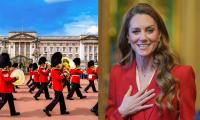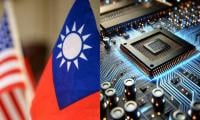Non-development and discretion
The most welcome decision emerging from Prime Minister Imran Khan’s first cabinet meeting was to put an end to discretionary fund allocations, which had institutionalised waste and corruption in the governance of the country.
Henceforth, no one – from prime minister to ministers to MNAs and MPAs – will be able to indulge in an exercise that smacked of the hubris of medieval-era rulers and flew in the face of prudent resource allocations. Several people had been protesting against such a cavalier attitude towards the scarce resources of a poor country, but all objections were brushed aside because these discretionary funds provided easy access to other people’s money with no questions asked. The decision to abolish these discretionary funds marked the first departure from the status quo and will be welcomed by all.
Economics is a rational discipline. And the planning process of allocating resources among competitive demands is driven by maximising social and economic returns for the people whose money is invested in this exercise. If both conditions are respected, the outcome would be ‘development’ which opens up opportunities for the people and creates wealth in the economy. If these conditions are violated, it creates non-development for the people as the wealth of the nation is siphoned off beyond its borders.
That is the theory of development. Our discretionary model turned the discipline of economics and the planning process on their heads which caused non-development of the people and development of the rulers. In financial terms, such irrational and wasteful use of public funds would be called an ‘expense’ and not qualify as investment which generates an income stream. This expense creates debt; and as this practice continues over the years, the debt keeps mounting and pounding more liabilities upon people.
Although voices against this discretionary model were raised by some elected representatives, journalists and civil society members, it was business as usual. One MNA of an earlier assembly, who as member of the Public Accounts Committee had observed its working had shown moral courage and asked for an end to this practice. According to her, “An MNA will come and say his constituency needs a road in so-and-so area; the PWD will do a survey and make a budget for the project; the PWD will ask the MNA which contractor is most suitable for the project. And it is here that collusion with contractors occurs. The contractor makes a bill and the project which could be done for five lakh rupees is estimated at Rs10 lakh – with 10 percent or more going to the MNA.”
This practice, which started in the 1980s to win over support of members elected to assemblies in the party-less elections, has continued to gather an increasing mass of funds under its discretion. Such practices by people in leading positions do not remain confined to one place but cascade down and are adopted by others at various political, administrative and technical levels – and in due course the whole system of governance is infected with the same disease.
In persisting with the discretionary use of public funds, Pakistan was keeping company with countries like Ghana, Honduras, Liberia, Nigeria, Uganda, Zimbabwe and others, most of which figure prominently in the corruption index of Transparency International.
Such discretionary uses of public funds are scrupulously avoided in respected democracies all over the world. In some countries, transgressions carry severe penalties. It would be useful here to illustrate the respect and responsibility with which elected representatives of democratic countries deal with public money, from my personal experience. In 1990, the then prime minister of Japan, Toshiki Kaifu, came on an official visit to Pakistan. Japan had earlier announced a three billion yen loan for Pakistan, against which we recommended projects – but after the scheduled date.
In the meantime, prime minister Kaifu had left on a foreign tour which also brought him to Islamabad. After arrival ceremonies at the airport, as coordinator of the meeting between the two prime ministers, I sat with the cabinet secretary of Japan in the same car so we could go over the agenda of the next day’s meeting. When I referred to the projects that Pakistan had recommended against the three billion yen loan, the cabinet secretary suggested these projects should not be on the agenda as their inclusion would embarrass his prime minister.
When I persisted with their inclusion, he said that because these projects were not sent by the Pakistani side as per schedule, they had not been evaluated by the relevant departments of the government of Japan. And the prime minister of Japan knew that under Japanese law, he had no discretion to give approval for spending public funds on projects which had not been first examined for their social and economic viability.
Since our prime minister was keen to secure the concurrence of the prime minister of Japan in the meeting, I urged the Japanese cabinet secretary to persuade his prime minister so that their approval could be announced in the joint press conference of the two PMs. But he explained that this was not possible because these funds were not the personal property of the prime minister that he could give away at his discretion. They belonged to the people of Japan who had laid down certain rules and procedures for evaluating the social and economic viability of projects before funds could be approved by the prime minister. Since these projects arrived behind schedule, their required evaluation could not be carried out. And without their recommendation, the prime minister was not authorised to give approval for use of public funds.
Compare this care and respect for use of public funds by an elected head of the democratic government of one of the richest countries with the cavalier manner in which hundreds of billions of public funds of a poor country like Pakistan have been dished out at discretion without examining comparative social and economic returns on projects and strong and independent auditing to keep people informed that their money is being properly utilised for the purposes for which they were allocated.
Pakistan has been the third largest recipient of foreign aid in the world – over $20 billion of it has flowed into the country, besides the country securing over $90 billion of debt. National development outlays are also made, all of which are supposed to lift people out of their predicament. And yet our people figure at the bottom of education, health and nutrition, productivity and other indices, and are still struggling with problems of poverty and unemployment. This disconnect between resources and people’s problems has largely been caused by the discretionary model and its lack of prudent and productive investment in public-sector development projects.
Is it any wonder then that this discretionary model has created an image of Pakistan in the international community as a country that has so little to show for so much money spent in the name of development? That is why it became a non-development model – and one hopes that we have seen the end of it.
The writer designed theBoard of Investment and theFirst Women’s Bank.
Email: smshah@alum.mit.edu
-
 Prince Harry All Set To Return To Britain Next Week?
Prince Harry All Set To Return To Britain Next Week? -
 Is Princess Charlotte Becoming Most Confident Young Royal?
Is Princess Charlotte Becoming Most Confident Young Royal? -
 ‘Stranger Things’ Star David Harbour Speaks Up About ‘psychotherapy’
‘Stranger Things’ Star David Harbour Speaks Up About ‘psychotherapy’ -
 Jennifer Love Hewitt Talks About Scary 9-1-1 Episode
Jennifer Love Hewitt Talks About Scary 9-1-1 Episode -
 Kate Middleton Ditches Palace Life For Where She 'truly Relaxes'
Kate Middleton Ditches Palace Life For Where She 'truly Relaxes' -
 Pixel Watch May Soon Warn You If You Leave It Behind
Pixel Watch May Soon Warn You If You Leave It Behind -
 Serious Liver Scarring Shows Potential To Be Reversed With Latest Drug
Serious Liver Scarring Shows Potential To Be Reversed With Latest Drug -
 Elon Musk Backs Donald Trump To Invoke Insurrection Act Amid Minnesota Protests
Elon Musk Backs Donald Trump To Invoke Insurrection Act Amid Minnesota Protests -
 Scientists Unravel Mystery Of James Webb’s ‘little Red Dots’ In Deep Space
Scientists Unravel Mystery Of James Webb’s ‘little Red Dots’ In Deep Space -
 Nano Banana Explained: How Google’s AI Got Its Name
Nano Banana Explained: How Google’s AI Got Its Name -
 Fire Causes Power Outage On Tokyo Train Lines, Thousands Stranded As ‘operations Halted’
Fire Causes Power Outage On Tokyo Train Lines, Thousands Stranded As ‘operations Halted’ -
 YouTube, BBC To Ink Landmark Deal To Launch Exclusive Bespoke Shows
YouTube, BBC To Ink Landmark Deal To Launch Exclusive Bespoke Shows -
 Meghan Markle Turning Prince Harry's Invictus Games Event Into 'bad Fashion Show'
Meghan Markle Turning Prince Harry's Invictus Games Event Into 'bad Fashion Show' -
 TikTok To Roll Out New Age Detection Technology Across Europe
TikTok To Roll Out New Age Detection Technology Across Europe -
 Tom Brady Explains How Divorce With Gisele Bündchen Affected His NFL Career
Tom Brady Explains How Divorce With Gisele Bündchen Affected His NFL Career -
 Taiwan, TSMC To Expand US Investment: A Strategic Move In Global AI Chip Race
Taiwan, TSMC To Expand US Investment: A Strategic Move In Global AI Chip Race



